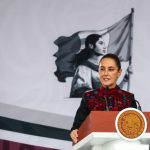Four more students were arrested yesterday, but the Supreme Court has said that the exam will only be retaken if it is proven that the questions were distributed on a large scale before the exam. The agency in charge of collecting the evidence will have to share online a series of information that has not yet been made public. Like engineering, medicine is a highly sought-after faculty for young Indians: this year 2.4 million candidates had applied for 110,000 places.
New Delhi () – In recent weeks, several people have been arrested in connection with fraud during the National Eligibility Cum Entrance Test or NEET, the national entrance exam for medical school in India. A situation that recalls, for the deep reasons that gave rise to it, the protests by university students in Bangladesh, who have been calling for days for the abolition of the reserved quota system for public offices.
Yesterday the Central Bureau of Investigation arrested four students students from the All India Institute of Medical Science in Patna, Bihar, accused of having helped Pankaj Singh, one of the candidates who allegedly committed the fraud. Singh is said to have stolen the exam question paper from a box at the National Testing Agency (NTA), an exam-making body based in Hazaribagh, Jharkhand. Another 30 people linked to the two centres in Patna and Hazaribagh have already been arrested, while the Supreme Court has said that a new exam can only be held if large-scale violations are proven.
The exam was held on May 5 and the results were announced on June 4. But it quickly became clear that something was wrong: 67 students had scored the maximum score, an unprecedented situation. Since 2016, when the NEET became the official entrance exam for medicine, at most one, two or three students had managed to get a perfect score and achieved 720 points. Even the scores between 650 and 680, which normally guarantee access to the Faculty, had increased significantly compared to the past. Although (unsurprisingly) the number of exams between 610 and 640 points had not increased.
Medical and engineering schools are highly sought after by Indian students because, in a country with a current youth unemployment rate of over 9% (and rising), these are professions that guarantee a secure and stable salary.
This year alone, 2.4 million candidates sat the medical exam at 4,750 centres in 571 cities (not only within India but also outside the country) for 110,000 available seats, of which 55,000 to 60,000 are allocated to public universities and half are reserved for students from economically and socially disadvantaged backgrounds. Tuition is significantly cheaper at state universities, where students pay between 500,000 and 1 million rupees ($6,000 to $12,000) over five years, a figure that can be ten times higher at private universities.
The submissions made to the Supreme Court in the last month are divided between those who want the exams to be re-conducted, those who do not want the results to be annulled and those who want the exam to be scrapped altogether. “The fact that there was a leak of documents in Patna and Hazaribagh is acknowledged. The question papers were distributed in those places. We want to check whether the phenomenon has been limited to those centres or whether it has spread,” the court declaredand ordered the National Testing Agency to publish the results of all candidates on its website tomorrow, without revealing the identity of the students but including the city and the centre where they took the exam. So far the government has ruled out the possibility of repeating the exam, and supports the version that the irregularities were detected.
Several commentators also pointed to problems related to the NTA, a body created in 2017 that It is not even clear whether it is public or private and which, in any case, does not comply with the minimum transparency standards. The ANT, for example, unlike other autonomous bodies that depend on the central government, has not published an official document on its website explaining its objectives and organizational structure. There is also no information available on the staff and methods for preparing the questionnaires, while information on the budget and financial resources is scarce.
Yet despite these shortcomings, it has been increasingly tasked with commissions, some of which, like medical entrance textbooks, are of enormous proportions in a country of nearly 1.5 billion people. “Such a gigantic function is being carried out without proper government oversight,” said Sasikanth Senthil, a Tamil Nadu MP and former Indian Administrative Service officer. “There is no doubt that the agency should be held as accountable as other government bodies, especially since it deals with a crucial issue affecting hundreds of thousands of students.”
“INDIAN MANDALA” IS ASIANEWS’ NEWSLETTER DEDICATED TO INDIA. DO YOU WANT TO RECEIVE IT EVERY FRIDAY IN YOUR EMAIL? SUBSCRIBE TO THE NEWSLETTER AT THIS LINK






![[Img #74676]](https://thelatestnews.world/wp-content/uploads/2024/12/Laser-artificial-neuron-150x150.jpg)






Add Comment